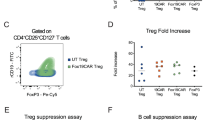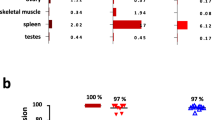Abstract
Pathogenic effector T cells are key contributors to autoimmune diseases such as systemic lupus erythematosus (SLE). General inhibition of T cells using, e.g., methotrexate, prednisolone, or TNF blockers, has prominent therapeutic effects frequently at the cost of severe long-term side effects and toxicity. Therefore, targeted strategies that can selectively inhibit or eliminate pathogenic T cells are sought after as a new approach to safely block perpetual inflammatory T-cell responses and inhibit concomitant progressive tissue destruction. Of particular interest in this respect is the use of the so-called single-chain fragments of variable region (scFv) antibody fragments for the targeted reactivation of Fas-dependent activation-induced cell death (AICD). Recently, we demonstrated that a recombinant fusion protein comprising a T-cell-targeted anti-CD7 scFv antibody fragment genetically fused to soluble FasL (sFasL) can eliminate synovial fluid T cells in the absence of activity toward resting peripheral blood cells. Here, we describe a detailed protocol for construction and preclinical evaluation of such scFv:FasL fusion proteins that may be used to selectively eliminate pathogenic immune cells.
Access this chapter
Tax calculation will be finalised at checkout
Purchases are for personal use only
Similar content being viewed by others
References
Lubberts E, Koenders MI, van den Berg WB (2005) The role of T-cell interleukin-17 in conducting destructive arthritis: lessons from animal models. Arthritis Res Ther 7:29–37
Lubberts E (2010) Th17 cytokines and arthritis. Semin Immunopathol 32:43–53
Shah K, Lee WW, Lee SH et al (2010) Dysregulated balance of Th17 and Th1 cells in systemic lupus erythematosus. Arthritis Res Ther 12:R53
Moreland LW, Pratt PW, Mayes MD et al (1995) Double-blind, placebo-controlled multicenter trial using chimeric monoclonal anti-CD4 antibody, cM-T412, in rheumatoid arthritis patients receiving concomitant methotrexate. Arthritis Rheum 38:1581–1588
Choy EH, Chikanza IC, Kingsley GH, Corrigall V, Panayi GS (1992) Treatment of rheumatoid arthritis with single dose or weekly pulses of chimeric anti-CD4 monoclonal antibody. Scand J Immunol 36:291–298
Kirkham BW, Thien F, Pelton BK et al (1992) Chimeric CD7 monoclonal antibody therapy in rheumatoid arthritis. J Rheumatol 19:1348–1352
Schiff M, Keiserman M, Codding C et al (2008) Efficacy and safety of abatacept or infliximab vs placebo in ATTEST: a phase III, multi-centre, randomised, double-blind, placebo-controlled study in patients with rheumatoid arthritis and an inadequate response to methotrexate. Ann Rheum Dis 67:1096–1103
Chiang EY, Kolumam GA, Yu X et al (2009) Targeted depletion of lymphotoxin-alpha-expressing TH1 and TH17 cells inhibits autoimmune disease. Nat Med 15:766–773
Brenner D, Krammer PH, Arnold R (2008) Concepts of activated T cell death. Crit Rev Oncol Hematol 66:52–64
Green DR, Droin N, Pinkoski M (2003) Activation-induced cell death in T cells. Immunol Rev 193:70–81
de Bruyn M, Bremer E, Helfrich W (2013) Antibody-based fusion proteins to target death receptors in cancer. Cancer Lett 332:175–183
Schneider P, Holler N, Bodmer JL et al (1998) Conversion of membrane-bound Fas(CD95) ligand to its soluble form is associated with downregulation of its proapoptotic activity and loss of liver toxicity. J Exp Med 187:1205–1213
Bremer E, ten CB, Samplonius DF, de Leij LF, Helfrich W (2006) CD7-restricted activation of Fas-mediated apoptosis: a novel therapeutic approach for acute T-cell leukemia. Blood 107:2863–2870
Bremer E, Abdulahad WH, de BM et al (2011) Selective elimination of pathogenic synovial fluid T-cells from rheumatoid arthritis and juvenile idiopathic arthritis by targeted activation of Fas-apoptotic signaling. Immunol Lett 138:161–168
Eggleton P, Bremer E, Tarr JM et al (2011) Frequency of Th17 CD20+ cells in the peripheral blood of rheumatoid arthritis patients is higher compared to healthy subjects. Arthritis Res Ther 13:R208
Sandilands GP, Perry M, Wootton M, Hair J, More IA (1999) B-cell antigens within normal and activated human T cells. Immunology 96:424–433
Wilk E, Witte T, Marquardt N et al (2009) Depletion of functionally active CD20+ T cells by rituximab treatment. Arthritis Rheum 60:3563–3571
Holley JE, Bremer E, Kendall AC et al (2013) CD20+ Th17 cells in multiple sclerosis brain may be targeted for apoptosis. Multiple sclerosis and related disorders (in revision)
Helfrich W, Haisma HJ, Magdolen V et al (2000) A rapid and versatile method for harnessing scFv antibody fragments with various biological effector functions. J Immunol Methods 237:131–145
Bremer E, Kuijlen J, Samplonius D et al (2004) Target cell-restricted and -enhanced apoptosis induction by a scFv:sTRAIL fusion protein with specificity for the pancarcinoma-associated antigen EGP2. Int J Cancer 109:281–290
de Bruyn M, Wei Y, Wiersma VR et al (2011) Cell surface delivery of TRAIL strongly augments the tumoricidal activity of T cells. Clin Cancer Res 17:5626–5637
Author information
Authors and Affiliations
Editor information
Editors and Affiliations
Rights and permissions
Copyright information
© 2014 Springer Science+Business Media, New York
About this protocol
Cite this protocol
Helfrich, W., Bremer, E. (2014). Bifunctional Antibody Fragment-Based Fusion Proteins for the Targeted Elimination of Pathogenic T-Cell Subsets. In: Eggleton, P., Ward, F. (eds) Systemic Lupus Erythematosus. Methods in Molecular Biology, vol 1134. Humana Press, New York, NY. https://doi.org/10.1007/978-1-4939-0326-9_7
Download citation
DOI: https://doi.org/10.1007/978-1-4939-0326-9_7
Published:
Publisher Name: Humana Press, New York, NY
Print ISBN: 978-1-4939-0325-2
Online ISBN: 978-1-4939-0326-9
eBook Packages: Springer Protocols




